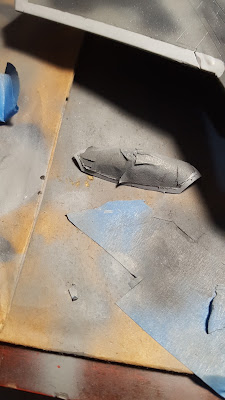After the previous build, the next unfinished plane went on the line. It had sat on top of book shelf for some years until I picked it up in February. I had given up after a shoddy attempt at painting it white with a rattle can when it did not turn out well. I hoped to get a smooth white coat but instead ended up drops dripping down the sides of the fuselage; I guess I did not wait long enough between coats of paint.
I started the restoration by sanding off the awful globs of paint and reapplied the panel lines with an Exact-o-knife. I could not keep the knife steady and ended up with some messy panel lines, something I will watch out for in the future
I started the restoration by sanding off the awful globs of paint and reapplied the panel lines with an Exact-o-knife. I could not keep the knife steady and ended up with some messy panel lines, something I will watch out for in the future
Using my new airbrush, I reapplied the white airliner paint, with the trademark blue Lufthansa vertical stabilizer. I took matte black and coated the inside as you can see through the windows to prevent light leaking through. I additionally added the grey under belly.
The decals for this plane were one of the most tedious things I have ever done. For example. the ubiquitous "no step" markings were plentifully placed along the delicate panels on the wings. Furthermore there were no shortage of decals on the fuselage and engines for various valves ports and safety signs.
The metallic window frames of the cockpit window were made using short wires and glued into the shape of the windows.
With some light weathering along the bottom and engines I hanged the plane into the sky of my bedroom.





























